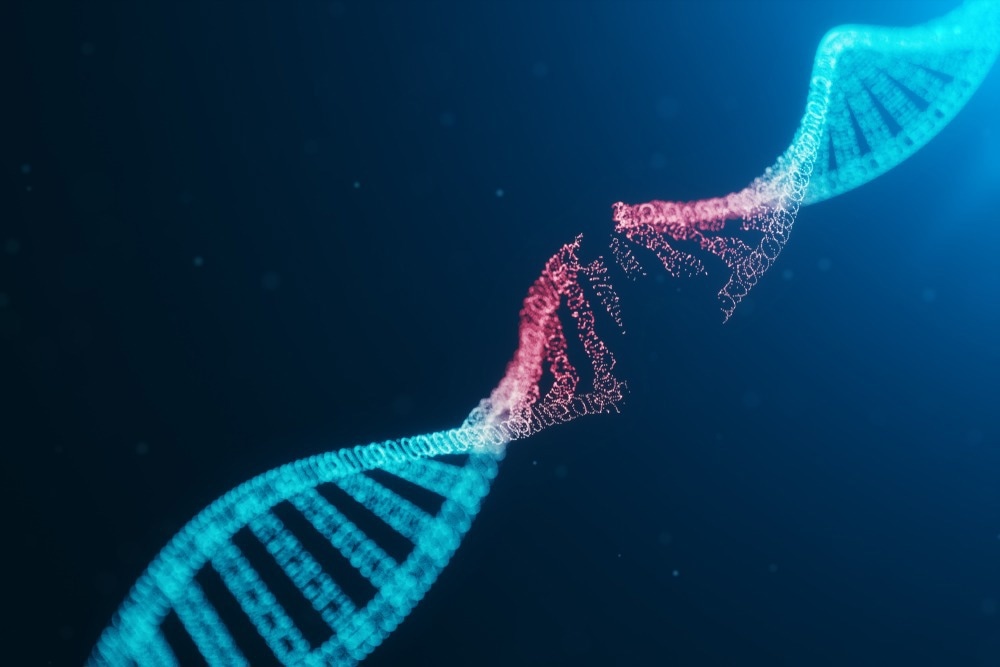A new Aging Cell study reports that impaired deoxyribonucleic acid (DNA) repair capacity among elderly individuals increases expression of the angiotensin-converting enzyme 2 (ACE2) receptor that is used by the severe acute respiratory syndrome coronavirus 2 (SARS-CoV-2) to gain entry into cells.
 Study: DNA damage contributes to age-associated differences in SARS-CoV-2 infection. Image Credit: Rost9 / Shutterstock.com
Study: DNA damage contributes to age-associated differences in SARS-CoV-2 infection. Image Credit: Rost9 / Shutterstock.com
Background
SARS-CoV-2, which is the causative pathogen for the coronavirus disease 2019 (COVID-19), has infected over 632 million worldwide and claimed over 6.58 million lives to date. Since the inception of the COVID-19 pandemic, SARS-CoV-2 infection has continued to disproportionately affect older people, who are more likely to experience severe symptoms and die from this disease.
Several factors have been found to precipitate the disparity in response to SARS-CoV-2 infection among the elderly. These include differences in viral susceptibility among cell types, the presence of comorbidities, as well as different immune responses and capacities of individuals to combat infections.
Age-related DNA damage accumulation is an inherent characteristic of aging. Furthermore, considerable evidence indicates that certain ribonucleic acid (RNA) viruses, such as SARS-CoV-2, can cause significant DNA damage by activating the DNA damage response (DDR). The combination of these factors facilitates viral replication and subdues the host-immunological response.
DNA damage does not necessarily accelerate human aging; however, several diseases that lead to premature aging are associated with increased DNA damage accumulation due to the genetic mutations that alter genomic integrity preservation.
About the study
In the current study, researchers examine whether suppressing DDR or improving DNA repair capabilities in humans can reduce the viral load and tissue damage caused by SARS-CoV-2 infection.
In this experiment, Calu-3-Rluc cells, which are Calu-3 cells expressing Renilla-luciferase, were subjected to gamma ionizing radiation (IR) to cause DNA damage. At various days post-IR, cells were infected with lentivirus pseudotyped with the SARS-CoV-2 spike (S) protein, SARS-CoV, Middle East respiratory syndrome coronavirus (MERS-CoV), or vesicular stomatitis virus (VSV) G protein.
The firefly luciferase (Fluc) gene was inserted into this pseudovirus and its entrance was assessed three days after viral infection using a luciferase activity test. Caco-2-Rluc cells were treated with DDR inhibitors caffeine, KU55933, or VE-822 to determine the specificity of the DNA damage function on viral entry. The role of c-Jun in DNA damage-induced viral entry was then investigated.
Calu-3-sgTERC cells were generated by CRISPR-Cas9-mediated deletion of the TERC gene, which encodes an RNA template for telomere replication by telomerase. To study the effect of DNA damage in vivo, researchers administered IR to young eight-week-old mice and VE-822 to older mice that were 12 months old.
Clinical evidence of the role of DDR in the elderly related to SARS-CoV-2 infection was carried out by examining the expression of ACE2, phosphorylated histone 2AX (γH2AX), and the antibody p-c-Jun in healthy human small intestinal tissues. These tissues were isolated from elderly patients and tissues were extracted from the stomach or right-sided colon cancers of younger patients.
To counteract the increased vulnerability of DNA-damaged cells to SARS-CoV-2 infection, the researchers treated cells with nicotinamide mononucleotide (NMN) and MDL-800, the latter of which improves genomic stability, to enhance DNA repair
Study findings
ACE2 and SARS-CoV-2 expression levels were elevated by the age-related accumulation of DNA damage through the upregulation of c-Jun. DNA damage facilitates SARS-CoV-2 infection; therefore, inhibiting DDR reduces its impact. DNA damage suppressed ACE2 expression, as well as in vitro and in vivo viral infestations into the host cells, on DDR pathway inhibition.
SARS-CoV-2 viral load and lung damage can be reduced by inhibiting DDR of the aging process. Cells that harbor ACE2 receptors (ACE2+) expressed significantly more c-Jun than ACE2- cells.
The Pathway Interaction Database (PID) revealed that activator protein 1 (AP-1) and activating transcription factor 2 (ATF2) signaling pathways were significantly enriched among 73 upregulated genes in ACE2+ ciliated 2 cells. These pathways are often activated by DNA damage, in which c-Jun plays an important role in signal transmission. A clinical correlation was established between DNA damage, c-Jun, and ACE2 expression in human tissues because of these results.
SARS-CoV-2 infection and lung damage may be ameliorated by further NMN treatment in vivo. Thus, NMN therapy for treating COVID-19 may propose a novel approach, particularly while managing older people.
NMN is unlikely to repair DNA damage caused by damaged telomeres or other persistent DNA impairment that protects senescent cells from malignant transformation. NMN, in combination with senolytic medications, can be suggested for inhibiting SARS-CoV-2 and reducing COVID-19 severity.